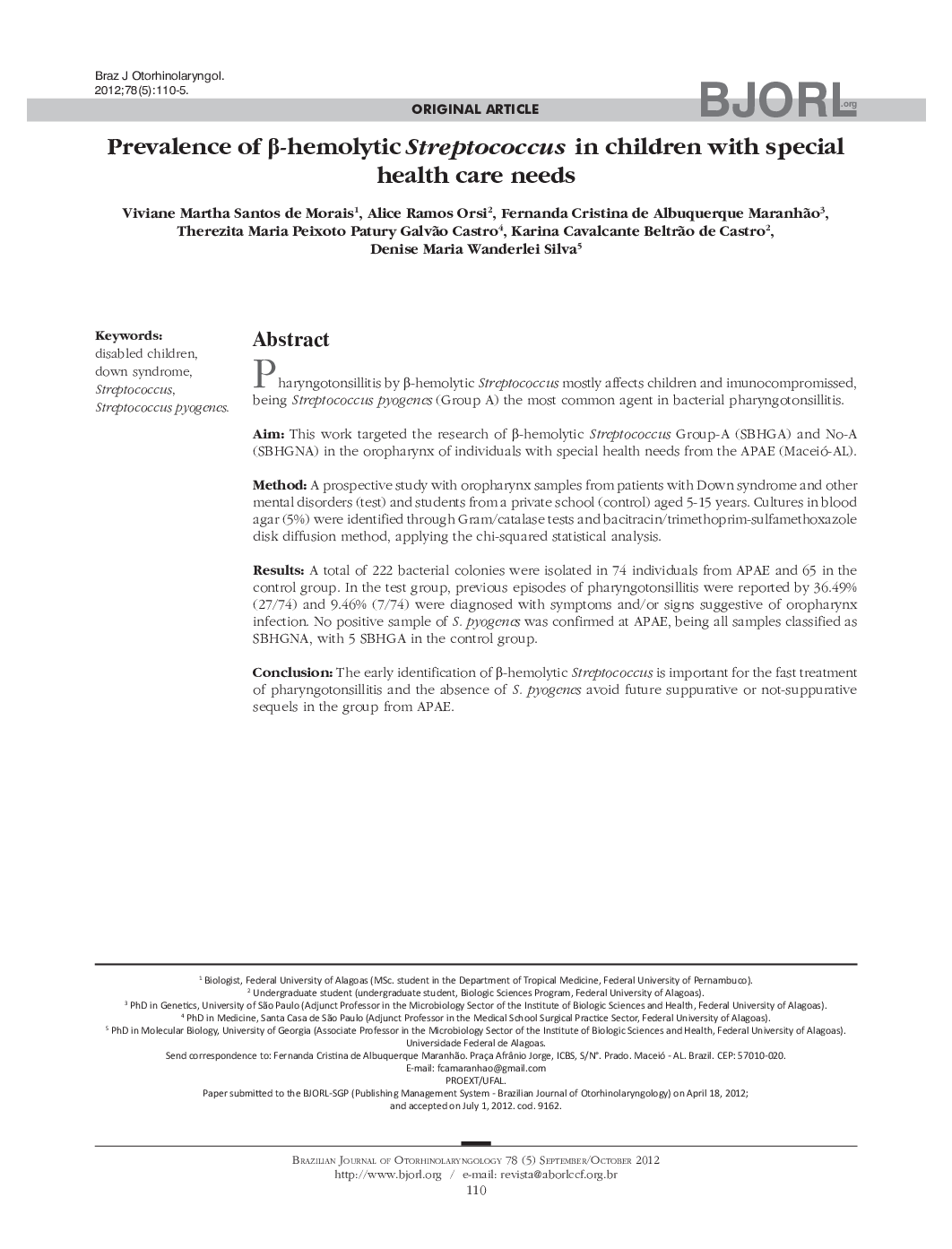| Article ID | Journal | Published Year | Pages | File Type |
|---|---|---|---|---|
| 4106797 | Brazilian Journal of Otorhinolaryngology | 2012 | 6 Pages |
Pharyngotonsillitis by β-hemolytic Streptococcus mostly affects children and imunocompromissed, being Streptococcus pyogenes (Group A) the most common agent in bacterial pharyngotonsillitis.AimThis work targeted the research of β-hemolytic Streptococcus Group-A (SBHGA) and No-A (SBHGNA) in the oropharynx of individuals with special health needs from the APAE (Maceió-AL).MethodA prospective study with oropharynx samples from patients with Down syndrome and other mental disorders (test) and students from a private school (control) aged 5-15 years. Cultures in blood agar (5%) were identified through Gram/catalase tests and bacitracin/trimethoprim-sulfamethoxazole disk diffusion method, applying the chi-squared statistical analysis.ResultsA total of 222 bacterial colonies were isolated in 74 individuals from APAE and 65 in the control group. In the test group, previous episodes of pharyngotonsillitis were reported by 36.49% (27/74) and 9.46% (7/74) were diagnosed with symptoms and/or signs suggestive of oropharynx infection. No positive sample of S. pyogenes was confirmed at APAE, being all samples classified as SBHGNA, with 5 SBHGA in the control group.ConclusionThe early identification of β-hemolytic Streptococcus is important for the fast treatment of pharyngotonsillitis and the absence of S. pyogenes avoid future suppurative or not-suppurative sequels in the group from APAE.
